Premium Only Content
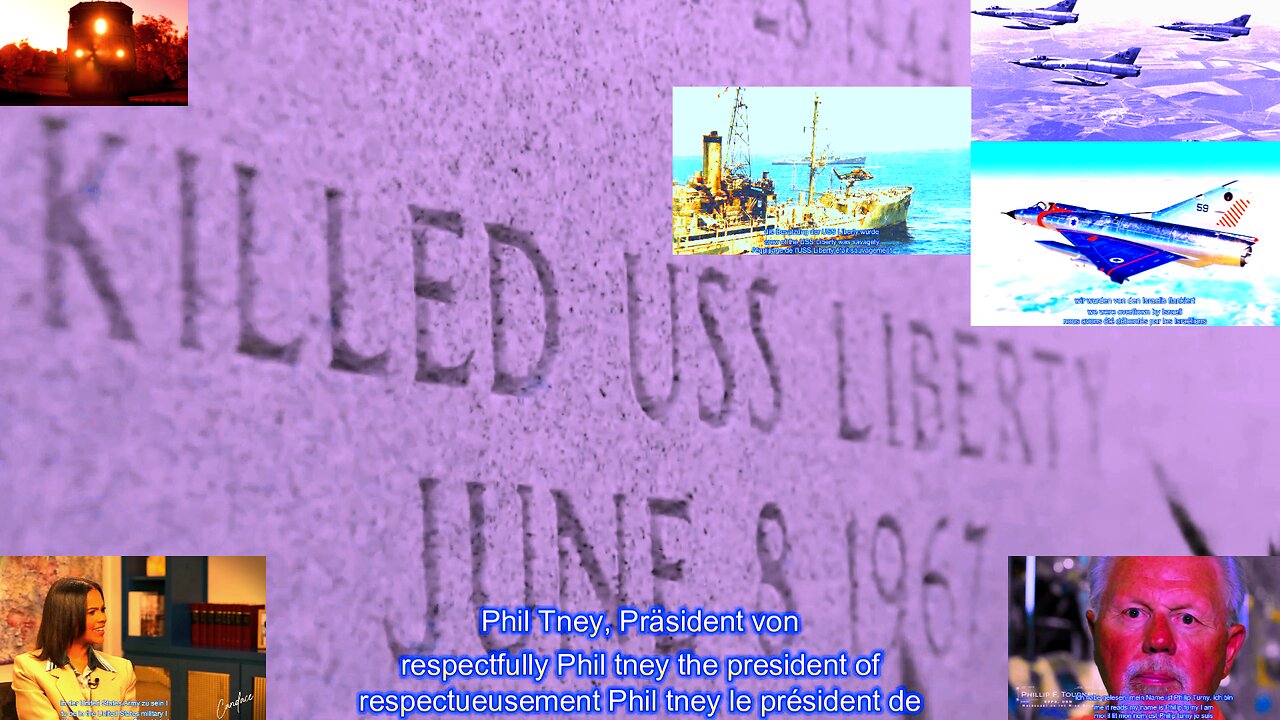
A Personal Announcement . Candace Owens
A personal announcement from Candace Owens.
Hallow
Join Hallow's Advent Prayer25 Challenge and get 3 months FREE!
http://www.hallow.com/Candace
Candace on Apple Podcasts: https://t.co/Pp5VZiLXbq
Candace on Spotify: https://t.co/16pMuADXuT
Candace on Rumble: https://rumble.com/c/RealCandaceO
Subscribe to Club Candace: https://www.clubcandace.com
Join The Candace Community on Locals: https://candace.locals.com
Clip of Daily Wire’s Ben Shapiro used in this episode is from dailywire.com
---
USS Liberty: Eyewitness Account
by James Ennes
Mr. Ennes was an officer on the bridge of the USS Liberty during the 1967 attack and is the author of Assault on the Liberty (Random House, 1980; Ballantine, 1986). He is the co-founder of an award-winning website dedicated to the memory of the victims of the attack.
The sky was clear over the eastern Mediterranean when I assumed the forenoon watch as officer-of-the-deck on the bridge of the USS Liberty.
The sea surface rippled slightly from a warm, seven-knot breeze as we headed south, sometimes as close as 13 miles from the Israeli and Egyptian coastlines, but always in uncontested international waters.
This was June 8, 1967, the fourth day of the third great Arab-Israeli war, soon to be known as the Six Day War. From here it was hard to realize that men were dying.
Along with the two lookouts on the signal bridge above me, I strained for some visible sign of warfare, but could see none. Except for an occasional low-flying airplane and, later, an explosion and smoky fire in the coastal village of El Arish, the scene seemed placid.
Officially, the Liberty was a"technical research ship," a 455-foot, 10,000 ton"mobile base for research in communications and electromagnetic radiation." However, newsmen and governments everywhere knew"research" as a pseudonym for"intelligence." To them we were an electronic"spy ship." Below deck, over 100 men with earphones, sensitive radio receivers and recording equipment all listened to radio communications ashore.
Our country was officially neutral in this war. Israel--widely considered America's best friend in the area--controlled the sky and most of the ground. Since before midnight, we had been circled regularly by Israeli warplanes, so we were certain the Israelis knew who we were. Some of the Israeli airplanes came so close that sailors waved to the pilots and could see the pilots waving back.
Like any Navy ship, we flew our standard five-foot by eight-foot American flag. For extra safety, I ordered our wind-town flag replaced by a new one, whose bright, clean colors would be even easier to see. Our five-knot patrol speed directly into the wind gave us 12 knots across the flag, enough to display the colors clearly.
After a brief noon-hour lunch break, I returned to the bridge for a general quarters exercise.
During the noon hour, two more low-flying Israeli aircraft circled the ship, their Star of David markings clearly visible. Immediately, our senior radio intercept chief appeared at my side."No sweat, Sir," he said quietly."We heard them telling their headquarters by radio that we are an American ship."
"Be alert," Capt. William McGonagle warned over the ship's general announcing system, clearly unimpressed by the fact that the aircraft seemed friendly."Respond quickly to all emergencies. We are operating near a very hot war where anything can happen." We knew that was true, but now most Liberty crewmen felt that we were out of danger.
When the drill ended an hour later, off-duty men filed onto the sun-drenched weather decks with towels and swimming trunks. We began to look more like a passenger liner than a naval vessel.
Meanwhile, on the bridge, Lt. Lloyd Painter had assumed control of the ship. Almost immediately, he received an urgent report from radar:"Three high-speed surface craft approaching from starboard quarter, bearing 280, range 16 miles, speed 32 knots."
Painter glanced at the bridge radar repeater and called McGonagle:"Captain, you gotta look at this. I never saw anything move so fast!"
Then another report from radar:"Three high performance aircraft, same range and bearing, closing fast."
Despite the urgent reports, no one was alarmed. By now we had been reconnoitered eight times in daylight by Israeli aircraft, and this looked like another routine visit.
I summoned Chuck Rowley, a cryptologic technician who also served as the ship's photographer, and together we climbed one deck to the signal bridge, the ship's highest platform, to try to take some pictures of the approaching aircraft.
"Look out," someone yelled suddenly."He's shooting!" Men scrambled for cover, but it was too late. The lead airplane had made a 180-degree turn and was approaching from dead ahead, all guns blazing. Exposed men felt heat, surprise and confusion as two dozen or more rockets from the airplane tore large holes in the heavy deck plating below us. Sunbathers ran nakedly for safety, while men in the gun mounts received direct hits that threw them high into the air.
All the men around me dropped, many badly hurt by rocket fragments. I was thrown against a railing and remained standing on one leg, my left leg broken above the knew by a tiny rocket fragment.
Captain McGonagle, although badly wounded early in the attack, ignored his own wounds. He raced around the bridge defending the ship, directing messages to our seniors, and coordinating the efforts to survive. Once I saw him walk through a wall of flame, ignoring rocket and cannon fire and even napalm as he fought to protect his ship. His performance earned him a well-deserved Medal of Honor.
Chief Radioman Wayne Smith sent an SOS to the Sixth Fleet by radio, but found his frequencies blocked by buzzsaw-like jamming signals.
In nine minutes he found a clear frequency, on which the carrier Saratoga acknowledged receipt of his authenticated call for help. Immediately, the carrier sent 12 aircraft to our rescue, but for reasons never explained, this same aircraft were recalled by orders from Washington while we were still under attack.
When our regular flag was shot down, Signalman Joe Meadors and Quartermaster Francis Brown hauled up an oversize seven-foot by 13-foot flag. Still the attack continued.
The helmsman fell. Quartermaster Francis Brown took the wheel and died there. Ens. David Lucas helped move Brown's body, then took the wheel himself.
When gasoline stored on deck burst into flame, Lt. Cmdr. Philip Armstrong tried to release the burning drums into the sea; the effort cost him his life.
When the ship's doctor, Richard Kiepfer, spotted two helplessly wounded men on deck, he tucked a man under each arm and carried them through gunfire to safety.
Every man outdid himself, and still the attack continued. Twenty-five minutes into the attack, the torpedo boats, sighted earlier, reached firing range. The aircraft pulled away. Russell David rechecked the oversize flag, saw it flying freely, and then switched on a 12-inch signal lamp."USS LIBERTY, U.S. NAVY SHIP," he flashed to the approaching boats until he was hit by gunfire and his lamp disabled.
"Stand by for torpedo attack, starboard side," warned the bridge. In the main engine room, Lt. George Golden took over several jobs at once as he ordered his men to safer ground, expecting to die here. McGonagle saw a torpedo pass close astern. A near miss.
Petty Officer Rick Aimetti heard one pass below him,"sounding like a motorboat," as he stood near the forecastle. Two more torpedoes passed safely, unseen.
A fifth torpedo, apparently launched from a mere 550 yards, made a direct hit on the ship's intelligence spaces. Twenty-five fine young men died instantly. Liberty assumed a heavy list to starboard as the engines stopped and part of the ship filled with water.
The torpedo boats, meanwhile, circled the ship, firing on firefighters and anything that seemed to move. Soon the general announcing system echoed the order that every sailor dreads:"Prepare to abandon ship." Rubber rafts dropped into the water, but the torpedo boas moved closer and fired upon the empty rafts.
Lloyd Painter, who had helped move wounded men near the lifeboat stations, now helped move them back below, away from the still-marauding torpedomen. Finally the firing stopped, 75 minutes after it started, possibly because of the threatened arrival of Sixth Fleet air power.
Still another hour passed. Then the torpedomen moved closer to the ship and signalled:"DO YOU NEED HELP?" The reply was a rude one. Thirty-four men were dead or dying, 171 wounded, from a 294-man crew.
In a National Security Council meeting attended by President Lyndon B. Johnson the next day, top government officials complained bitterly. It is"inconceivable that this was an accident," said Clark Clifford, then Foreign Intelligence Advisory Board Chairman, as he complained about the"egregious manner" of the Israelis."We're not tough enough," he said.
"Senators are outraged," added Secretary of State Dean Rusk."Incomprehensible," said Assistant Secretary Lucius Battle. The next day our government lashed out at Israel."There is every reason to believe that the USS Liberty was identified," our government said."The attack . . . is quite literally incomprehensible (and) must be condemned as an act of military recklessness reflecting wanton disregard for human life."
But the complaints were not for public knowledge. Publicly, our government pretended to believe the Israeli story that the attack was an accident. Privately, steps were taken to assure that the truth never reached the American public.
One of the first messages to arrive from Washington instructed survivors to discuss the attack with no one. Courts of inquiry were being held in both countries, and both reports would be swathed in secrecy. The American report, except for a declassified segment released to the press, remained top secret until forced out nine years later under the Freedom of Information Act. Its testimony reveals most of the scenario described here.
The Israeli report remains classified today, withheld from Americans at the request of the Israeli government, although a copy was leaked in 1980. That report informs American government leaders that the attack was a tragic result of a series of errors on both sides.
According to the Israelis, torpedomen investigating an erroneous report of a shore bombardment erroneously judged Liberty's actual five-knot speed to be 32 knots; because of the misjudged high speed, torpedomen erroneously classified Liberty as an enemy warship and called in the aircraft; attacking aircraft conducted three, low-level, pre-attack identification runs, but erroneously concluded that the target was an Arab warship when they failed to see her flag or the ten-foot hull numbers on her bow; torpedo boats also failed to see the oversize flag hauled up as they approached and asked the ship to identify itself; Liberty refused, according to the Israelis, and sent a signal meaning"Identify yourself first."
Extensive morning and noon-hour pre-attack reconnaissance described by crewmen"may be dismissed as exaggerated," says the Israeli government, which denies any such reconnaissance--even though every flight is fully documented in American records.
For years Liberty survivors and other interested Americans have asked both governments to reinvestigate the matter in order to resolve the discrepancies between what survivors say happened and what the Israeli government has reported. So far, they have been ignored. But now there is powerful support for survivors' claims that the attack was no accident.
Secretary Rusk, once a private citizen and free to speak out, said simply,"I have never believed the Israeli explanation."
Former National Security Agency Director Gen. Marshall Carter told me by telephone that he believes the Israelis knew the ship was American. His deputy, Dr. Louis Tordella, adds,"I believe it was a deliberate attack."
Former Central Intelligence Agency Director Richard Helms agrees."To say that this was an accident is drawing a pretty long bow in view of the evidence," says Helms.
And former Joint Chiefs of Staff chairman Adm. Thomas Moorer states his case even more strongly:"It's ridiculous to say this was an accident. There was good weather, she was flying the U.S. flag and the planes and torpedo boats attacked over a long period of time. I think Congress should investigate the incident, even now.
Even President Johnson's press secretary, George Christian, now reports that no one in the White House believed that the attack was accidental. And every year more evidence unfolds to show that the attack was indeed deliberate and that both governments are covering it up. For instance, a State Department report, recently released, shows that our government analyzed the Israeli excuse in 1967 and rejected every key contention as untrue, impossible or unlikely.
Yet the Israeli government never was asked to explain the discrepancies. Officially, the USS Liberty matter is closed. To all appearances, it will remain closed forever, because no government agency is prepared to take the political risk of re-examining the evidence.
It deserves to be re-examined.
-
 LIVE
LIVE
SoundBoardLord
4 hours ago90's Saturday Morning Cartoons, Chill Vibes & Great Conversations
301 watching -
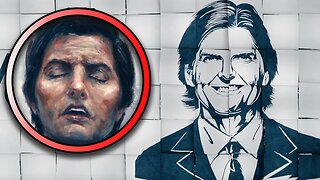 13:55
13:55
ThinkStory
1 day ago107 Hidden Clues & Details You Missed In Severance Season 2!
24.2K2 -
 24:54
24:54
CatfishedOnline
1 day agoVictim will NOT leave her Romance Scammer
21.4K5 -
 12:49
12:49
MTNTOUGH Fitness Lab
1 day agoNick Jones: Subzero Saunas and Sucking at Sports | MTNTOUGH Lab Visit
22.7K1 -
 29:47
29:47
TampaAerialMedia
5 hours ago $0.99 earnedUpdate SIESTA KEY, FL 2025 - Come Back after Hurricanes Helene & Milton
20.9K2 -
 29:36
29:36
Uncommon Sense In Current Times
21 hours ago $1.14 earnedMiraculous Healings: Faith or Science? | Billy Hallowell
22.9K4 -
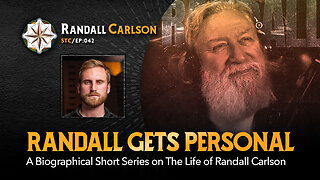 1:14:26
1:14:26
Squaring The Circle, A Randall Carlson Podcast
4 hours agoEP042-PT1 A Biographical Look Into The Life of Randall Carlson With Guest Warren Steury
15.2K4 -
 19:10
19:10
This Bahamian Gyal
20 hours agoHomeless . . .by choice? Going EXTREME to save money!
9.58K5 -
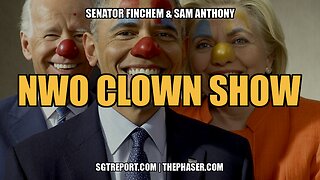 59:07
59:07
SGT Report
9 hours agoNWO CLOWN SHOW EXPOSED -- Senator Finchem & Sam Anthony
20.5K39 -
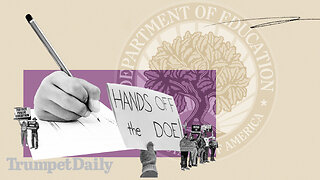 59:53
59:53
Trumpet Daily
1 day ago $3.57 earned$3 Trillion for Lowest Test Scores Ever - Trumpet Daily | Mar. 21, 2025
7.75K14